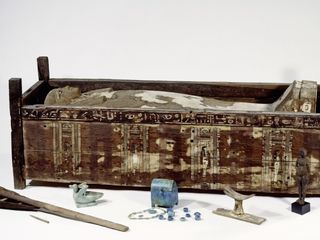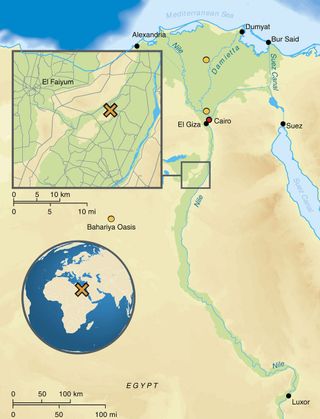Surprising Find: Ancient Mummy DNA Sequenced in First

For the first time, researchers have successfully sequenced the DNA from Egyptian mummies. The findings reveal that these ancient people were more genetically similar to populations living in the eastern Mediterranean — a region that today includes Syria, Lebanon, Israel, Jordan and Iraq — than people living in modern-day Egypt.
"We were excited to have at hand the first genome-wide data of ancient Egyptian mummies," said Stephan Schiffels, leader of the Population Genetics Group at the Max Planck Institute for the Science of Human History, in Jena, Germany. [24 Amazing Archaeological Discoveries]
Schiffels and a team of scientists from Poland, Germany, England and Australia led by Johannes Krause, a geneticist also at the Max Planck Institute for the Science of Human History, published their research in the May 30 issue of the journal Nature Communications.
Worldwide, the remains of thousands of mummies from ancient Egypt have been excavated, but obtaining intact, undamaged DNA from the bodies has proved challenging.
"Researchers were generally skeptical about DNA preservation in Egyptian mummies, due to the hot climate, the high humidity levels in tombs and some of the chemicals used during mummification, which are all factors that make it hard for DNA to survive for such a long time," Schiffels told Live Science.
Challenging task

Other research teams made at least two previous attempts to sequence DNA from mummies, but those efforts were met with intense skepticism. The first undertaking occurred in 1985 and was later shown to be flawed, because the samples had become contaminated with modern DNA. The second analysis, published in 2010, focused on King Tutankhamun's family, but it could not satisfy the critics either. Both studies used a technique called polymerase chain reaction (PCR), which can hone in on specific fragments of genetic information but can't distinguish ancient DNA from modern DNA, nor differentiate human DNA from other types that may be present.
In this latest study, Krause and his colleagues used a newer technique called next-generation sequencing, which can extract human DNA from other types and can tell whether a genetic fragment is very old or suspiciously new (an indication that it might be modern).
Sign up for the Live Science daily newsletter now
Get the world’s most fascinating discoveries delivered straight to your inbox.
The scientists focused their efforts on the heads of 151 mummified individuals who lived in the settlement of Abusir el-Meleq, south of Cairo, and were buried between 1380 B.C. and A.D. 425.
To reduce the risk of contamination, the researchers extracted the DNA inside a laboratory clean room. There, they irradiated the surfaces of bone and soft tissue for 60 minutes using ultraviolet radiation, which destroyed any modern DNA. The scientists then removed samples from inside soft tissue, skull bones and the tooth pulp. [Photos: 1,700-Year-Old Egyptian Mummy Revealed]
Following these and numerous other rigorous steps, the researchers found that the soft tissues had no viable DNA. However, the bone and tooth samples for 90 individuals contained ample amounts of DNA from mitochondria, the organelles inside a cell that convert oxygen and nutrients into energy. Mitochondrial DNA is passed down from mother to child and so contains genetic information from only the mother's side of the family.
The whole genetic picture
To get a more complete picture of a person's genetic history, the researchers needed DNA from the cell's nucleus, which contains DNA from the father's side of the family as well as the mother's. But that DNA was very poorly preserved, Schiffels said.
"We were only able to generate three nuclear genomic data sets," he said.
After extracting the DNA, the researchers enriched it and made copies for analysis. They then compared it with the DNA of other populations, both ancient and modern, that lived in Egypt and Ethiopia.
The researchers found that over the 1,300-year time span, the genetics of the people in the sample remained consistent — a remarkable finding, the researchers said, because ancient Egypt had been conquered several times in those years, including by the Greeks and Romans, and through it all, served as a trading crossroads for many different people.
Yet when the scientists compared their samples to genetic data from modern-day Egyptians, they found a difference. The DNA from the ancient Egyptians contained little DNA from sub-Saharan Africa, yet 15 percent to 20 percent of mitochondrial DNA in modern Egyptians shows a sub-Saharan ancestry, the researchers said.
Schiffels said the scientists can only speculate on why the genetic changes showed up later. "One possible cause could be increased mobility down the Nile and increased long-distance commerce between sub-Saharan Africa and Egypt," he said.
These changes could have been related to slave trading, which reached its height in the 19th century, he said.
He added that the team hopes to continue building on this research by analyzing more mummies from more time periods and more sites in Egypt.
Original article on Live Science.

